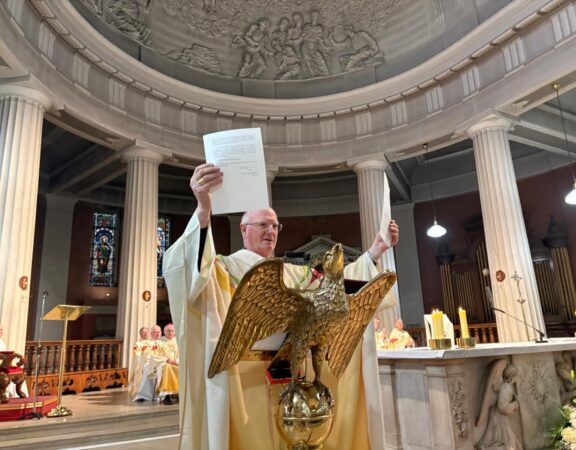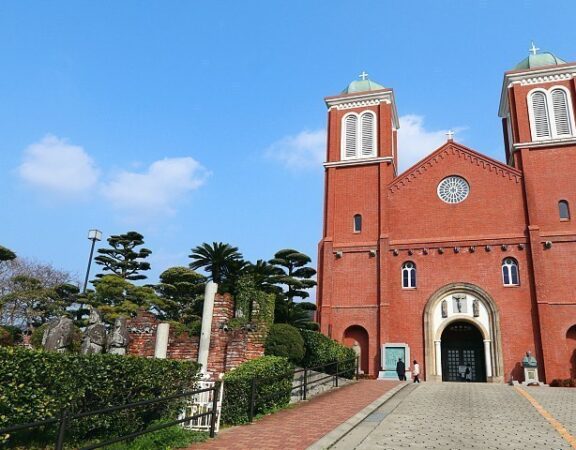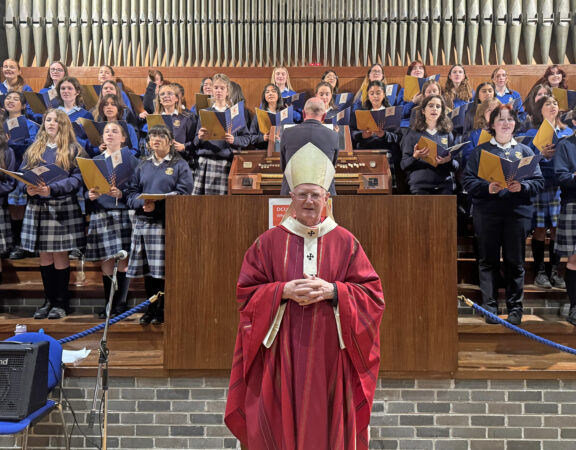CONFERRING OF DEGREES AT ST PATRICK’S COLLEGE DRUMCONDRA
Speaking Notes of
Most Rev. Diarmuid Martin
Archbishop of Dublin, Primate of Ireland
—————-
Saint Patrick’s College, Drumcondra, 5th November 2010
Only yesterday, I was tidying up some old books in the Library of Archbishop’s House and I stumbled on a coffee-table book from yesteryear entitled: “Views of Saint Patrick’s Training College, Drumcondra, taken in 1908”.
I am always fascinated by the details of the history of places and institutions I visit. When I visit school for anniversaries, the children are always amazed by what I know of the world at the time their school was opened, not realising that such knowledge is not the merit of personal historical research on my part: the merit has to go entirely to Google, and young children are fascinated at the idea that an elderly Archbishop would know something about Googling.
But for someone interested in the visible dimensions of history, a photo album is much more interesting than Google or Wikipedia. In 1908 Saint Patrick’s was a somewhat different place to that of today. There seemed to be just one or two major lecture theatres, very large, very linear, and occupied row after row by identically dressed young men in dark suits respectfully taking notes from a clerically dressed lecturer. In another photo, the same dark suits appear again in the neat rows of trainee teachers standing out in the playground for drill. Trainee teachers in the science hall were notable for their well-fixed ties. There was a photo of the refectory with sixteen tables bedecked with spotless white tablecloths and individual linen napkins folded like bishop’s mitres.
In 1908 the College was at it limits with 165 students and the staff photo showed a total staff of 15, a quarter of them priests. The introduction to the book noted that in the twenty five years between its foundation in 1883 and 1908 the College had proudly sent out to primary schools in all about 2,200 graduates.
Times were different. I suspect that the linen table cloths have gone with many of the other aspects of conformity which the photos wished to dominate.
All I will say is that it is great to enter into Saint Patrick’s today and encounter a truly vibrant community of very diverse young men and women – vibrant and excited about the College, vibrant and excited about education.
It is refreshing for me to come to this College on any occasion and see the enthusiasm that exists here about what education really is about: it is about helping to realise the potential, the hopes and the aspirations of the children of our country. This is a place where the talents of the young men and women who are its students are focussed talents: focussed not just in on themselves and their personal fulfilment but on enabling the next generation of young Irish boys and girls to flourish not just scholastically, but to flourish in their own vision of their future and the future of Ireland.
What will education in Ireland be like in the future? Today as I said young people are quaintly amused at an Archbishop who Googles. Your pupils in the future will not be surprised by your technological ability: if anything they will surprise you. The gap between generations will be revolutionary in its pace and in its quality. In many ways the generation of which you will be educators, will have the cutting edge on you in technology.
Times are hard. In today’s economic and social uncertainty, we should not overlook the fact that even with all our deficiencies Ireland has achieved so much in recent years. This is due in great measure to the contribution of teachers. That contribution has often not been adequately recognised. We owe our teachers a great debt.
We are facing difficult economic times and cutbacks in public funds for education are inevitable. The future of Ireland, however, will still be determined by the quality of the education system. It is important that where cutbacks are necessary in education they are properly thought out and monitored as regards their real effect, especially on the poorest and the educationally disadvantaged. Educational opportunity for the disadvantaged is not a luxury we can afford in better times; it is a fundamental dimension of educational policy at any time.
Frustration and anger should never lead us off course. Ireland can do it. Ireland can bring itself out of the difficulties. It has done it in the past; it can do it again. That is not the same as saying business as usual. Inequality and disregard for the vulnerable have to be fought in every situation, when things are flourishing and when purses are tight. We should, however, never loose confidence as a society. We should never rob our children of their confidence in their own ability, personal worth and the future. The talent and commitment we see here in this College witnesses to the great human resources and idealism that is the basis for a promising future.
Irish teachers have a tradition of doing better than the physical conditions in which they work. Young men and women went from here in 1908, from the world of the linen table napkins, into schools with almost no resources and they transmitted a passion for learning. Succeeding generations of Irish teachers have shown the similar resourcefulness and innovation in the varied situations of their times.
I congratulate the young men and women who graduate here today and tomorrow. You are proud to graduate. Your parents are proud and happy for you. The College one hundred and two years after the publication of that photo album is proud to add another graduation year to its proud history and all of us here are proud of this College and what it achieves for Ireland.
Education in the future will be different. Ireland is changing. Our society is more pluralist. New patronage systems will replace the almost monopoly of religious schools in a manner which respects the rights of parents, but also of teachers.
That change is inevitable and it is good. But there are two things I believe that such change should constantly remember, evaluate and verify. Variety in patronage should not result in difference of opportunity. Variety in patronage should not lead to a two-tier educational system. We have to be careful that variety of patronage turns out to be a true contribution to pluralism and not just an opportunity for some to opt out of integration.
Secondly, we have to be careful not to give the impression that somehow the principal mark of a pluralist culture is putting religious values towards the margins of society and that religious values do not belong within the framework of public education.
Earlier this year we celebrated the Beatification of Cardinal John Henry Newman, a true pioneer in enlightened thinking on higher education. His vision of education stressed that reflection on faith cannot be irrelevant to an overall reflection on knowledge and truth and meaning. For Newman: “One of the greatest disasters of modern times is the separation between religion and science, [while] the perfection of knowledge is a combination of both…“
To those to whom Christian faith is dear, that faith is the basis of a value system which reflects the Christian idea of God, who was revealed in Jesus Christ as a God who loves.
Values are what make education more than method; they are what inspire people of various generations to give more than one might at first imagine is possible. The message of Jesus is what has given Christian teachers the gift of being able to rejoice not only in their own satisfaction but in seeing the most vulnerable succeed. That is part of the tradition of this College from which thousands upon thousands of teachers have gone out to bring something deeper to an understanding of education, drawing on their Christian faith. Such vision is still needed today. Such a vision may be perhaps even more necessary today.
May God bless each of you in your future as teachers; may young people be blessed by your faith and your example.







